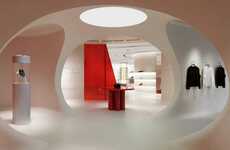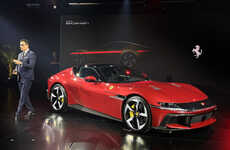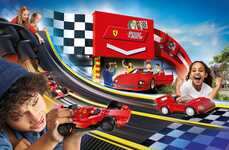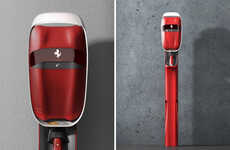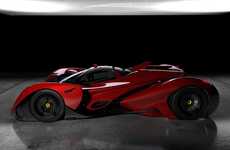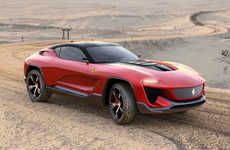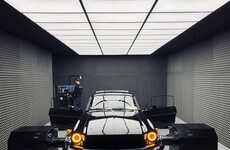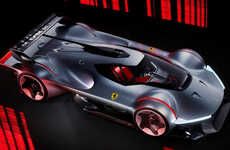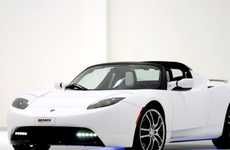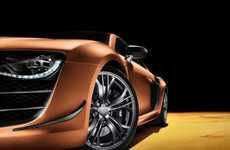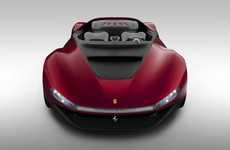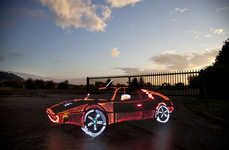
The Ferrari Cities of Tomorrow Display is a Mini Architectural Masterpiece
Corinne Guirgis — May 21, 2011 — Autos
Constructed from Ferrari parts, tiny human figurines and interesting architectural constructs, the Ferrari Cities of Tomorrow display is sure to draw in massive crowds. The futuristic mini city is on display at the Ferrari store on Regent St. in London, England and is a part of the Regent Street Windows Project.
Designed in collaboration with Regent Street retailers, the Royal Institute of British Architects, Elle and Regent Street, the Ferrari Cities of Tomorrow display is one of a kind. The display is meant to showcase "Ferrari-inspired urban environments of the future," according to NotCot. To do this, it uses components of past and present F1 and GT Ferraris, which are available at the Ferrari store alongside Ferrari memorabilia.
The city is on display until Sunday, May 29 and is the perfect excuse to stop in and check out that luxury Ferrari you've been dreaming about.
Designed in collaboration with Regent Street retailers, the Royal Institute of British Architects, Elle and Regent Street, the Ferrari Cities of Tomorrow display is one of a kind. The display is meant to showcase "Ferrari-inspired urban environments of the future," according to NotCot. To do this, it uses components of past and present F1 and GT Ferraris, which are available at the Ferrari store alongside Ferrari memorabilia.
The city is on display until Sunday, May 29 and is the perfect excuse to stop in and check out that luxury Ferrari you've been dreaming about.
Trend Themes
1. Futuristic Cities - The use of futuristic mini-cities built with auto parts are the future of urban design and can be used in architectural displays and urban planning.
2. Repurposing Automotive Parts - Reusing automotive parts can be a sustainable way of constructing architectural displays and can lead to new innovations in sustainable architecture.
3. Branded Urban Environments - Creating branded urban environments can increase engagement with consumers and can lead to innovative experiences with products and services.
Industry Implications
1. Automotive - The use of auto parts in architecture can lead to new market opportunities by creating products that cater to both automotive and architecture sectors.
2. Architecture - The use of auto parts in architecture displays can be a starting point for sustainable building practices and can lead to innovation in the industry.
3. Retail - Creating branded urban environments can increase engagement with consumers and can lead to innovative experiences with products and services, creating opportunities for retail industries.
2.1
Score
Popularity
Activity
Freshness

